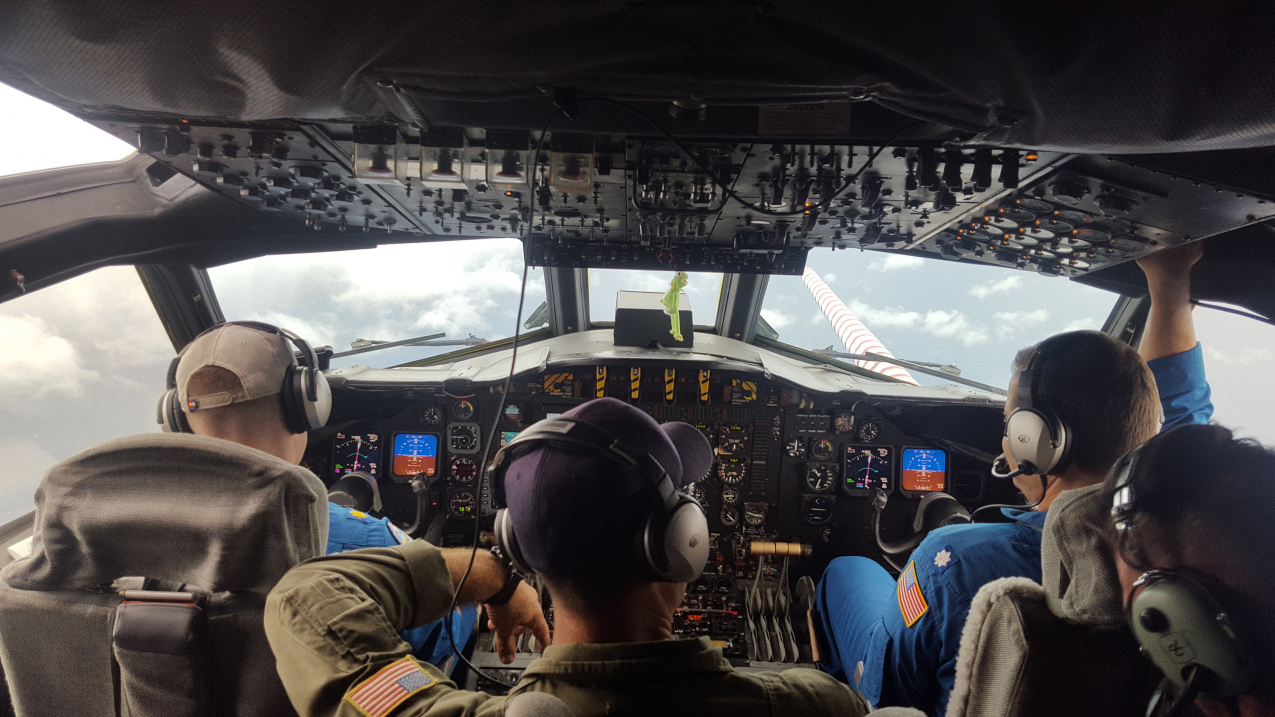Dr. Sim Aberson
“When we were rising out of that, we got to nine hundred feet, and one of the engines caught on fire. They put it out almost immediately. Before I was even able to register that they said engine three was on fire, it was out.”
(Image credit: Courtesy of Dr. Sim Aberson)
Dr. Sim Aberson began his hurricane research career in high school. During his career, he flew on numerous missions to collect data from hurricanes and his PhD dissertation work is still being used to determine where to send NOAA’s G-IV plane during a storm.
Dr. Lixion Avila
“They used to call me the bug finder because every time they wanted to install something new, and they thought it worked, I found a bug.”
As a child growing up in Havana, Cuba, Dr. Lixion Avila became fascinated with tropical storms at a very young age and has always believed that hurricanes “are a part of his soul.” began working for the National Hurricane Center (NHC) in the 1980s, translating weather advisories into Spanish and transporting maps and went on to become a renowned hurricane specialist.
Max Mayfield
“The first day of class, I was in class. They called me out. I had a call from the National Weather Service regional office in Texas, and they said they had an opening at the National Hurricane Center in Miami for an intern. Was I interested? And I said, ‘I’ll be there tomorrow if you need me.’”
(Image credit: Courtesy of Andy Newman)
Max Mayfield began his career with the National Weather Service in 1972 and held various positions within the organization before becoming the director of the National Hurricane Center in 2000. During his tenure, he provided expertise and guidance during numerous significant hurricanes, including Hurricane Katrina in 2005. Mayfield gained recognition for his calm demeanor and informative briefings, which helped the public and emergency responders prepare for and respond to severe weather events.
Dr. James “Doc” McFadden
“People want to know three things. They want to know when is it going to come, where is it going to go, and how strong is it going to be when it gets there. Well, when is it going to come? That’s a crapshoot. That’s climate. It’s going to come sometime, but we don’t know when. Where is it going to go? We got a pretty good handle on it now, where is it going to go? How strong is it going to be when it gets there? We’re improving that all the time.”
The late Dr. James “Doc” McFadden played a key role in coordinating thousands of projects on more than two dozen aircraft of various types, makes, and models and immeasurably influenced the evolution of airborne data collection at NOAA over his 57-year career. He holds the Guinness World Record for longest career as a hurricane hunter.
Dr. Ed Rappaport
“Now that I’ve been in the profession for many years, there are times when I’m asked to give talks to younger folks about career advice and guidance. One of the points I make is: these people are very bright. Most, I’m sure, are smarter than I am. But one thing I’ve mentioned to them is don’t discount luck, both good and bad.”
Dr. Ed Rappaport’s family had a home weather station and recorded weather observations for decades because of his early interest in weather. He spent most of his more than 40-year career at NOAA’s National Hurricane Center in Miami and contributed to many improvements in forecasting, including developing and implementing National Weather Service graphical forecasts and storm surge watches and warnings.
Source link


